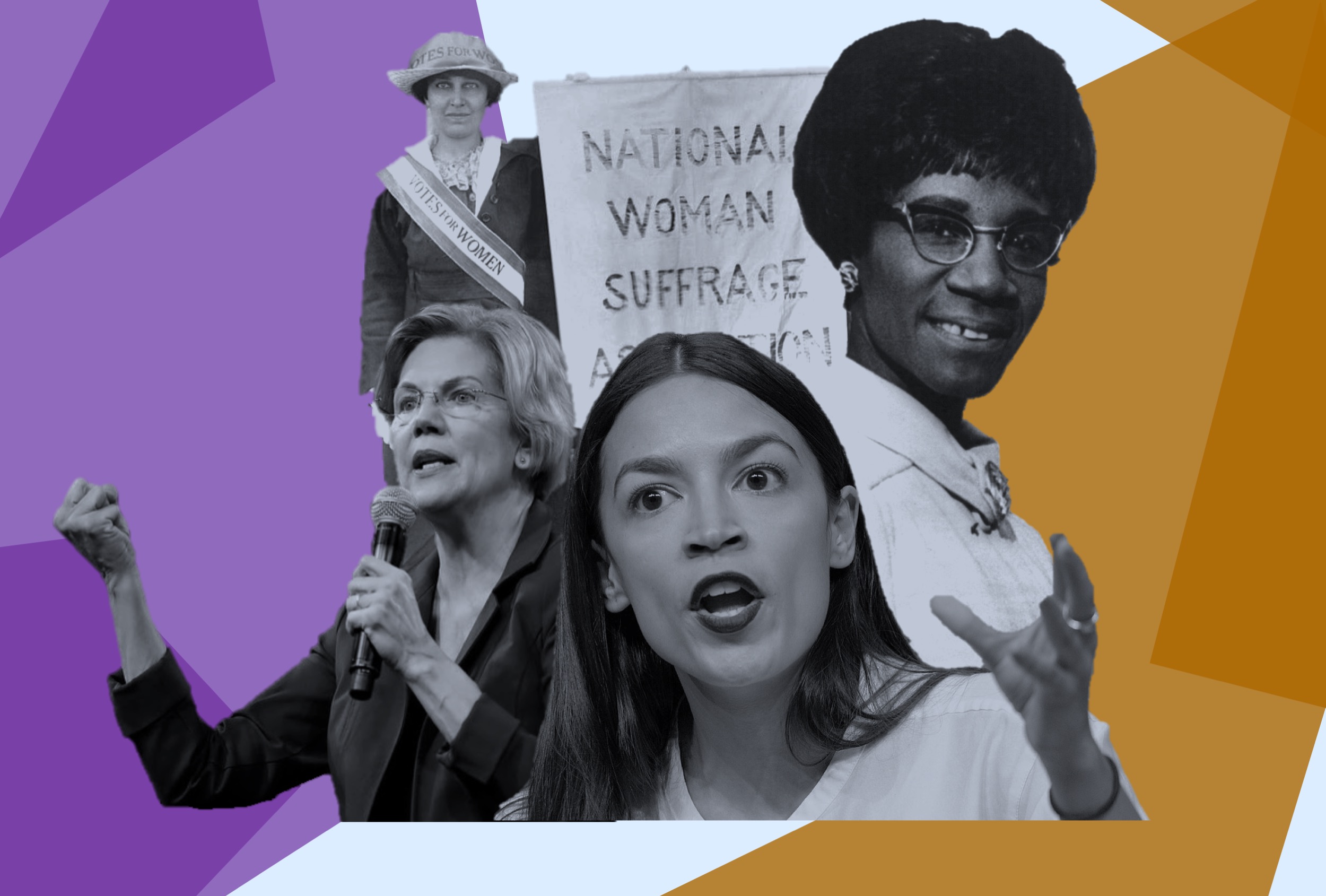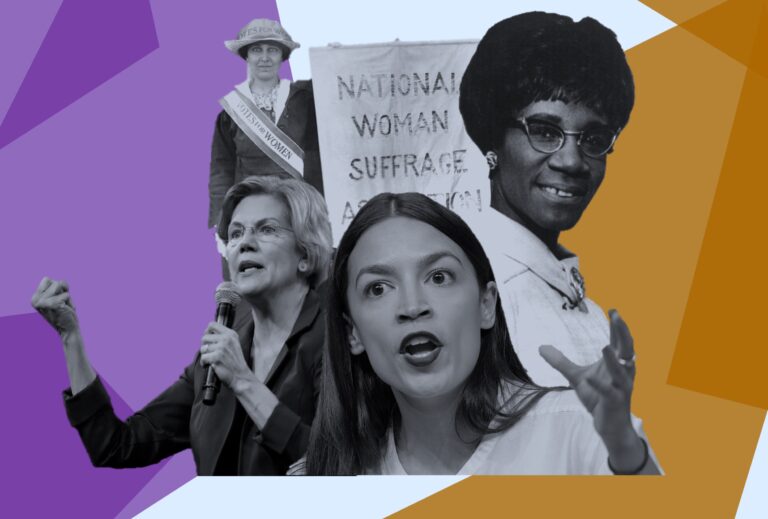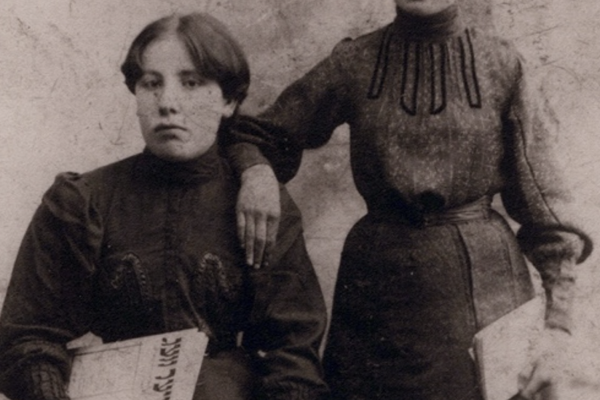Western thought has traditionally defined citizens as Aristotle did in The Politics: “He who has the power to take part in the deliberative or judicial administration of any state is said by us to be citizens of that state.” In other words, citizens have political rights, including the rights to vote and hold office. But who actually gets to enjoy these rights?
When the New World gained independence from Europe, republican constitutionalists defined political rights to exclude as much as to include. In the United States, for example, women, children, indigenous peoples, and the enslaved were cast out of the body politic; they received neither citizenship nor rights. After the Constitution was ratified in 1788, almost a hundred years passed before African American men received the right to vote, via the Fifteenth Amendment in 1870.
Women waited 150 years, until the Nineteenth Amendment in 1920. Many Black and brown citizens waited even longer, until the Voting Rights Act in 1965. Most Americans see these historic gains in voting rights as synonymous with citizenship. In other words, 1920 was the year women became full citizens.
But political rights are not just about voting, and in many countries the right to vote and stand for election have gone hand in hand. This broader definition of suffrage—the right to elect and be elected—guides contemporary understandings of citizenship since, without them, the promise of representative democracy remains unrealized. Yet this absence continues to characterize U.S. politics today. A century after the ratification of the Nineteenth Amendment, the glass ceiling of the presidency remains intact, even as women such as Hillary Clinton and Elizabeth Warren broke new ground. The United States ranks seventy-sixth in the world for women’s presence in the lower or single house of congress, sharing this spot with Afghanistan and Cabo Verde—strange company for a country that sells itself as a beacon of democracy.
The centennial of U.S. women’s suffrage, therefore, offers not just commemoration, but opportunity. Other countries haven’t waited for women’s election to catch up to women’s voting. Instead, countries including Mexico and Rwanda have implemented policies designed to catapult more women into elected office. The United States has much to learn from these examples. If the women’s vote was the battle of the twentieth century, women’s representation will be the battle of the twenty-first.
In the United States, women seeking public office have had to rely on themselves. Typically, they create their own groups to help fund women’s campaigns, such as EMILY’s List. Or they run their own candidate training schools, such as She Should Run and Emerge. But despite these efforts, the United States falls far short of gender parity. For much of the 2010s, women averaged 20 percent of the House of Representatives and the Senate. Record numbers of women—especially Democratic women—ran for office in the wake of #MeToo and the Women’s March, but the needle has still not moved much: women gained just fourteen House seats and three Senate seats in 2018. Currently, women comprise about 24 percent of the House and 25 percent of the Senate, showing the limits of the women’s mobilization approach. By using the example women have set in other democracies, however, the United States can raise these numbers and fight for a vision of democracy premised on women’s presence—one that the government is obligated to fulfill.
Take Latin America, for example. In 1911 Mexican suffragists sent a petition to their president demanding “the same rights of men be recognized in women, in relation to voting and being elected.” Most Latin American constitutions used the same language as the Spanish Constitution of 1812, which had defined suffrage in terms of voting and officeholding in order to prevent noncitizens and non-elites from participating in electoral politics. This nineteenth-century Ibero-American definition of citizenship, however, is what allowed twentieth-century Latin American suffragists to talk about more than just the vote. By invoking the definition of citizens as those who could “elect and be elected,” Latin American women framed the conversation on political rights in ways that U.S. women did not.
Of course, demanding the right to be elected (counterintuitively labeled “passive suffrage” by jurists) posed significant hurdles for Latin America’s suffrage movements. Opponents disliked the idea of women voting (called “active suffrage”), but they especially resisted the idea of women holding office. The Catholic Church in Uruguay opposed suffrage on precisely these grounds. A 1914 article in the Church’s newspaper stated, “The destiny that women must fulfill, according to God’s plan, is contradictory, in our view, with the exercise of the broad political function.” Nonetheless, as women’s suffrage expanded across Latin America after World War II, legal reforms explicitly stipulated the right to elect and be elected.
This distinction allowed a later generation of women activists to correct suffrage’s key failure: its inability to bring women into government. In the 1980s, most Latin American congresses were still less than 10 percent women. By returning to suffrage’s meaning “as the right to elect and be elected,” women pointed out that equal political rights went beyond the opportunity to cast their vote. Contemporary women’s movements from Mexico to Argentina tied citizenship to officeholding and pushed their governments to adopt reforms that would protect and enforce the right to be elected.
They had remarkable success. In 1991 Argentina passed the modern era’s first gender quota law, which required political parties to nominate 30 percent women as candidates for the national legislature. By the century’s end, eleven other Latin American countries had adopted similar measures. France pushed the trend further, adopting gender parity, meaning that parties must run equal numbers of men and women for elected office. A 1999 reform to the French constitution stated that “the law shall favor equality among women and men to have access to electoral mandates and hold elective office.”
Today over 75 countries have such laws. Collectively called “gender quotas,” most of these laws target women as candidates—women still have to win the election—but some also reserve a proportion of legislative seats for women. Gender quotas are found in advanced democracies, such as France and Spain; in new democracies, such as Tunisia; and in post-conflict countries, such as Rwanda. They also work. Of the 50 countries that had elected 30 percent or more women to the lower or single chamber of their national legislatures by 2019, 29 used gender quota laws. In most of the others, voluntary gender quotas within political parties explain women’s success.
The scale of electoral reforms promoting women’s nomination and election now makes Argentina’s pioneering law seem quaint. Countries as diverse as Mexico, Belgium, and Senegal have adopted gender parity. And efforts to promote women’s right to be elected do not stop with quotas. Other measures include requiring that women comprise portions of parties’ governing boards, lowering filing fees for women candidates, and granting women preferred access to public campaign funds. Together these policies reflect a global endorsement of positive action to raise women’s political representation. Once used to keep citizenship restricted to elite men, the “right to be elected” ultimately provided the normative and legal framework that transformed electoral politics.
Now consider the United States. While the United States Constitution does not use the same “elect and be elected” language of the Ibero-American documents, some U.S. state laws enfranchising women, both before and after 1920, included this language with little fuss. Federal lawmakers also understood the connection between active and passive suffrage, but efforts to amend the Constitution to expand suffrage favored more prudent approaches.
When the Fifteenth Amendment extended the franchise to Black Americans in 1870, for example, the language approved by both houses of Congress contained the right to vote and the right to hold office. Yet some lawmakers disagreed about whether the right to hold office required separate mention, or if the right to vote already implied it, according to law professor Nicole Gordon. Moreover, abolitionists feared the text’s prohibition of voting restrictions on multiple grounds—including race but also property and nationality—would be a bridge too far, and that Reconstruction would be in jeopardy if the states refused to ratify the amendment. With time running out, Congress passed a compromise version that deleted the right to be elected and limited the amendment to only prohibiting voting restrictions based on race.
Racism also dogged suffrage for American women. The Nineteenth Amendment prohibited voting restrictions based on sex, but—like the Fifteenth Amendment—remained silent on other restrictions. Federal law did not recognize indigenous peoples as citizens until 1924, so Native women’s enfranchisement lagged. And in the Jim Crow South, state laws imposed voting restrictions, such as poll taxes and literacy tests, which effectively disenfranchised southern Black women for decades. At the same time, as historian Nancy L. Cohen points out, northern Black women—even more so than white women—organized to run for office in the years immediately following the passage of the Nineteenth Amendment. Nominally, women’s suffrage established that women could seek elected office—but that didn’t mean it would happen automatically.
The United States, after all, construes political rights as negative rather than positive. The Fifteenth and the Nineteenth Amendments focus on what the government cannot do—abridge voting rights on the grounds of race and sex—not what the government can do. The right to candidacy is conceived similarly. State and local governments set rules governing ballot access, which create some legal barriers to candidate entry. U.S. jurisprudence has established that these regulations cannot be so onerous as to restrict a constitutional right to candidacy—which is not the same as asserting that governments must guarantee candidacy.
In the 1960s U.S. courts began to establish a right to candidacy without reference to either passive suffrage or race and gender. In Williams v. Rhodes (1968), the Supreme Court rejected burdensome signature requirements for third parties to gain ballot access. The following year, in Moore v. Ogilvie, the Court overturned high signature requirements for individual candidates. In 1973 the First Circuit of the U.S. Court of Appeals invalidated a Cranston, Rhode Island, ordinance that required city employees to resign upon becoming candidates. The Court ruled, “The right to run for public office touches on two fundamental freedoms: freedom of individual expression and freedom of association.” Finally, in Lubin v. Panish (1974), the Supreme Court held that states could not require filing fees from indigent candidates, determining “the right of a party or an individual to place on a ballot is entitled to protection.”
The distinction in political and legal theory between negative and positive rights matters for understanding women’s suffrage. Enlightenment philosophers such as John Locke (1632–1704) and James Mill (1773–1836) saw political rights as rights of noninterference, meaning rights the government could not impede or abridge. This same notion of noninterference informed the authors of the Bill of Rights. Telling the government to get out of individuals’ way—which the laws do by not restricting liberty—differs from requiring the government to help individuals engage. Removing ballot access restrictions is negative and consistent with the obligation to not obstruct. Proactively creating space on the ballot by reserving slots for third-party or indigent candidates, by contrast, would be positive.
A negative understanding of political rights persisted not just in the United States, but in much of the world until the late twentieth century. Democratization was spreading across the globe, but women’s political representation seemed stagnant. Women held 10.9 percent of seats in the lower or single chamber of the world’s legislatures in 1975, 12 percent in 1985, and 11.6 percent in 1995. The UN World Conferences on Women—in Mexico City in 1975, Copenhagen in 1980, Nairobi in 1985, and Beijing in 1995—all called attention to women’s lack of decision-making power.
These conversations reverberated throughout Latin America. Many countries were emerging from long periods of civil war or dictatorship, and leaders of these political transitions were aware that democracy needed to guard against the human rights abuses associated with conflict and military rule. Democracy came to mean not just free and fair elections, but the active pursuit of equality and justice for all citizens.
Women’s rights activists seized this opening, bringing new life to constitutions’ mention of active and passive suffrage. Reviving the “right to be elected” language, Latin American activists shifted the focus away from legal barriers, which suffrage had removed, to structural barriers that nonetheless impeded political rights, such as sex-based discrimination. They refashioned political rights as positive rather than negative and focused on passive suffrage, asserting that the state must guarantee women’s candidacies with quotas.
Advocates also forced the conversation beyond candidacy and toward electoral outcomes: Who actually sits in the legislature? In the United States, feminists were focused on winning elections by creating donor networks and training programs that would help women aspirants break through the old boys’ clubs. Latin American advocates placed more emphasis on political rights themselves. In doing so, they made four pivots.
First, they invoked what political scientists call descriptive representation, the notion that elected assemblies should resemble the polities over which they preside. Political theorists such as Hanna Pitkin have pointed out that the legislature’s very function—to have individuals stand for the larger body of citizens—means that geography alone, or territorial representation, cannot produce a legislative body that mirrors the citizenry.
Arguing for descriptive representation requires a second pivot to an understanding of political representation as a group right, not an individual right. If citizens share in the offices of the state, per Aristotle, then women (and other groups) cannot be citizens if they lack representation. Without it, they have formal equality, but they lack its benefits in practice, meaning they lack substantive equality. Their absence from assemblies thus constitutes a collective harm that extends beyond a woman’s individual right to run and accrues to women as a group, who have a collective right to presence.
These arguments about descriptive representation and substantive equality conceive of women as a distinct group, based not on individuals’ understanding of their own identity but on politically salient shared characteristics. Advocates for descriptive representation thus don’t argue that all features of citizens ought to be reflected in assemblies. Rather, the relevant features are those characteristics around which society builds and enforces meaning. Being disabled, for instance, systematically affects individuals’ ability to access public space in ways that having red hair does not.
Patriarchy created a sexual division of labor that relegated women to domestic and reproductive labor and still sustains a whole set of beliefs that subject them to subordination. These views—including the belief that women are not suited for politics—persist no matter what any individual woman thinks, feels, or desires. Patriarchy also has real-world consequences, such as women’s persistent underrepresentation in elected office even in the absence of legal impediments to their candidacy. Feminist scholar Laurel Weldon puts it nicely: women can understand, prioritize, or identify with the category “women” in myriad ways, but the existence of women as a politically salient group is a “social fact.”
Claims to descriptive representation based on “social facts” leads to the third pivot: the right to political representation constitutes a right to decision-making power. Legislatures stand for the body politic for a reason: to make decisions that affect every member of society. Women drafting Costa Rica’s 1990 Law Promoting Women’s Social Equality included an article stipulating that each political party nominate half women and half men. Then vice-minister of culture Mimi Pardo reasoned, “If we are 50 percent of the population, well, we have to have 50 percent of the political power.”
The parity provision did not pass then (though quotas would pass in 1996 and parity in 2009), but Costa Rican women were not making these arguments in a vacuum. Throughout the 1990s, summits of European leaders signed accords supporting gender parity. In 2003 the Council of Europe officially recommended the balanced participation of men and women in decision-making. The United Nations Economic Commission for Latin America and the Caribbean followed in 2007. In France parity proponents argued that republican assumptions about universal citizenship historically applied only to men—and that parity constituted a necessary corrective for women, the other half of the human race. As scholar Éléanore Lépinard recounts, such arguments meant that “a powerful new normative definition of gender equality as sharing power and equal presence took hold.” In addition to Costa Rica, six other Latin American countries now have gender parity, alongside about twenty other countries worldwide.
Viewing representation as both presence and power constitutes the fourth and final pivot—to justice. Unless women are inherently unsuited to governing, the only explanation for men’s overrepresentation is the systematic exclusion of women. In 1998 political theorist Anne Phillips asked, “By what ‘natural’ superiority of talent or experience men could claim a right to dominate assemblies?”
Of course, justice-based claims often gain little traction in electoral politics. The argument for gender quotas reflects a belief that patriarchy constituted a historical injustice that unfairly advantaged men and caused material harm to women. In practice, this admission would require political leaders—mostly men—to give up their seats as recompense. Candidacies are a zero-sum game. Though some countries cleverly expanded the total number of legislators in adopting gender quotas, in most cases it requires significant proportions of incumbent men to step aside.
Women thus needed more arrows in their quivers when campaigning for quotas. Some advocates eschewed justice-based arguments in favor of instrumental ones; they linked descriptive representation to substantive representation, or the idea that group members will deliver policy outcomes that benefit their group. Argentine quota campaigners famously claimed, “With few women in politics, women change, but with many women in politics, politics changes.” As Mexico debated gender quotas in 1996, a poll found that 55 percent of Mexicans agreed the country would be governed better if more women were in office; 67 percent viewed a quota as beneficial for the country.
Indeed, advocates point to the vast body of academic research showing that more women in office results in more family-friendly policies, including paid daycare and paternity leave; more liberal reproductive health policies, such as access to contraception and abortion; and stronger punishments for violence against women. Some even argue that women’s inclusion will benefit everyone: there will be less war, better deliberation and more transparency, less corruption, and increased trust in government.
Instrumental arguments appeal to the “social fact” of women as a group. If women merit descriptive representation because, on average, they have different lived experiences, then these lived experiences should inform politics and policy. Women know women’s policy interests better than men, and so their presence ensures outcomes that better reflect the needs and wants of all citizens.
Arguments that women make a difference, however, hark back to the suffrage era, where many suffragists claimed that women possess superior morality. In the United States, pro-suffrage cartoons featured women voters cleaning house, literally sweeping the trash out of Washington, D.C. Though beliefs about women’s better nature are less fashionable today, instrumental arguments persist. International policymakers inspire gender equality efforts with narratives about women as gamechangers. Former UN Secretary General Ban Ki-moon said, “As women thrive, so will we all.” Melinda Gates—whose philanthropy single handedly shapes development policy—titled her 2019 book The Moment of Lift: How Empowering Women Changes the World.
Instrumental arguments are compelling, and social science research supports the claim that more women in office is linked to policy outcomes that benefit women. But these arguments also require women to justify their inclusion in ways that men never have. In fact, in legal challenges to quotas and parity, justice-based arguments are more likely to prevail. High courts across the globe have disagreed with opponents’ claims that gender quotas are unconstitutional or unjust. While opposition has often been fierce and adoption has taken years, quotas and parity have been upheld as constitutional in nearly every case. In 1998, as Costa Rica implemented its then 40 percent gender quota, the Constitutional Court established the doctrine of “compensatory inequalities”: women deserved “special and qualified treatment” because ending discrimination demands “unequal treatment for the unequal.” Likewise, in 2008, the Indonesian Constitutional Court upheld the 30 percent quota law, arguing that positive action arranged the matter fairly, given that women previously had been treated unfairly.
High courts have also rejected other objections to quotas and parity. In Spain, plaintiffs in 2008 claimed that requiring parties to choose women overruled party members’ preferences about candidates, thus violating members’ freedom of speech and association. The Spanish Constitutional Court rejected this argument, reasoning that the principle of substantive equality limited political parties’ autonomy. Spain’s 40 percent gender quota law stands. Likewise, Mexico’s federal electoral court issued a 2011 decision clarifying that parties’ right to choose candidates could not trump the constitutional imperative to achieve gender equality.
These decisions relied on the same reasoning that women’s rights activists in Latin America used in proposing quotas: democracy in the twenty-first century carries norms of equality and justice for all citizens. Across the globe, then, the accumulated jurisprudence recognizes governments’ interest in ensuring women’s presence, for reasons of descriptive representation, access to power, and correcting for historic harms.
Positive action for women candidates is the most popular electoral reform of the millennium—but not in the United States. Of course, gender quota laws aren’t directly translatable to the United States. One quirk of the U.S. political system is that political parties do not control ballot access. Candidates register themselves: anyone can step forward, claim a party label, and gather enough signatures to appear on the ballot. The idea of positive action still matters, however, especially because influential voices in the United States see women as the problem.
In 2016 Hillary Clinton was the first woman presidential candidate from a major party. Reflecting on this triumph, a New York Times headline proclaimed, “The problem for women is not winning, it is deciding to run.” The article quoted Senator Kirsten Gillibrand, who reported spending ten years convincing herself to run because “women are the worst self-doubters.” EMILY’s List was founded in 1985, and 35 years later, the number of groups recruiting women candidates has ballooned to around 400 national, state, and local initiatives—but the narrative remains the same. As She Should Run admonishes, “It’s not that we don’t win, it’s that we don’t run.”
The groups certainly have a point. Pioneering scholarship by political scientists Richard Fox and Jennifer Lawless concluded that women manifest lower levels of political ambition than men. That women lack the desire to run for office resonates inside and outside academia, though many researchers demonstrate that an individual lack of ambition reflects structural problems. As Shauna Shames found in a study of the aspirant pool—those preparing for careers in public policy and law—women perceive themselves to be disadvantaged, relative to men, in every aspect of campaigning, from receiving fair media treatment to raising money and being forgiven for minor flaws.
Women also receive less encouragement to run. While U.S. political parties do not control ballot access, they do influence which aspirants come forward. Local party networks in particular are boys’ clubs who tend to recruit men. This bias persists even in the Democratic Party, despite national party leaders’ insistence on the importance of women’s representation. In 2018 the Democratic National Committee celebrated its efforts to boost descriptive representation, reporting 70 percent of departments headed by women and 44 percent staffers of color. At the same time, in House races from Kentucky to California, women Democratic aspirants reported being told to wait their turn. Local Democratic leaders had tapped men for the seat, and they labeled women aspirants “upstarts” and “spoilers.” Women of color received this message most loudly.
When women do run, they win—but they do so “backwards and in high heels,” as the saying goes. The Center for American Women in Politics documents a performance premium for women: women candidates have a quality advantage over their male competitors, especially in terms of prior political experience. Political scientist Sarah Fulton dug deeper, assessing candidate quality using eleven different metrics, from public speaking to personal integrity. Women who won scored higher on the quality scale than men who won. The work of Fulton and other political scientists makes a strong case that the candidate field is comprised of mostly high-quality women—and some mediocre men.
Groups supporting women candidates do matter in a candidate-centered system. They respond to the individual ethos of U.S. elections, helping aspirant women pull themselves up by their electoral bootstraps. Donor organizations and training programs provide female aspirants with money, networks, acumen, and inspiration, leveling the playing field between women and men. They emphasize empowerment, combining “you can win” messages with reminders that women’s voices improve outcomes—the same instrumental reasoning used by international policymakers and philanthropists.
But a narrative exhorting women to lean in still implies that women’s deficiencies are what keep them out and that the burden of solving the problem falls to them. Flipping the script suggests instead that men should lean out. Focusing on what’s wrong with women overlooks how sex-based discrimination places systematic, structural barriers before women candidates while removing them for men.
Narratives about women’s ambition deficit let governments off the hook for achieving substantive equality. Instead, focusing on the “right to be elected” would allow advocates in the United States to call obstacles such as the performance premium what they are: violations of women’s political rights. When framed this way, positive action seems more tenable. The range of policy options goes beyond quotas and includes reducing or eliminating filing fees for women candidates, or allocating party funds for women’s campaigns or leadership training. Some countries even classify the sexist treatment and harassment of women politicians, whether in the media or online, as forms of political violence that carry legal penalties.
Many countries also apply quota laws to not just candidates, but to political parties’ governing boards. Others require women’s names on short lists at the pre-candidate stage, that is, when party leaders choose whom to endorse (think Mitt Romney and his “binders full of women”). These reforms would translate to U.S. federal and state politics and might not even need legislation. For instance, the Democratic Party already requires that delegates to the national convention be comprised of 50 percent men and 50 percent women and all committees, including the Democratic National Committee, be comprised of 50 percent men and 50 percent women—though the party statutes are clear that this gender balance is not a quota! The Republican Party opts for a lighter touch, but nonetheless asks that each state “endeavor” to have equal numbers of men and women in its delegations to the national convention. In the absence of national quota laws, political parties in Germany, Sweden, South Africa, and Mozambique, among others, have voluntarily adopted quotas for women candidates. These measures have catapulted large numbers of women into office—all without government intervention.
Positive action, of course, has a tortured and unique history in the United States. The legacy of enslavement and the association of affirmative action with race means that positive rights claims gain little social or legal traction. Legal scholar Ruth Rubio-Marín explains that, by focusing on the injustice of patriarchy, gender parity arguments separate the question of women’s political exclusion from the political exclusion of racial or ethnic minority groups. This rhetorical separation worked elsewhere, but in the United States, where white supremacy and patriarchy are intertwined, Rubio-Marín believes any discussion of positive action for women necessitates simultaneous discussion of positive action for Black Americans. The combined forces of racism and sexism make this possibility unlikely.
Emily J. Zackin offers a more optimistic take on the likelihood of positive action. In Looking for Rights in All the Wrong Places (2013), she points out that while the Constitution is silent on positive rights, such rights abound in state constitutions, from guarantees to public education to protections of workers’ rights. These rights were won by dedicated activists who lobbied state legislators, engaged in strategic litigation, and waged successful campaigns for ballot referenda. In Zackin’s view, the notion of governments’ affirmative obligation to deliver material goods or produce equitable outcomes is not an alien concept, but an idea readily endorsed by voters and lawmakers.
The international community embraced gender quotas and gender parity because, one by one, women politicians and feminist activists in each country wrote proposals that matched their country’s realities. Three centuries ago, the right to elect and be elected intended to deny women citizenship. In recent decades, women in Latin America and across the globe transformed this exclusionary phrase into a trumpet for equality, forcing the conversation about political representation to center around citizenship and justice. In doing so, they pushed election law and party practice beyond what jurists and scholars could have imagined a century or two ago. As the United States celebrates a hundred years of suffrage but remains tied with Afghanistan for the number of women in the federal legislature, U.S. feminists might do the same. The impossible only becomes possible if someone tries.









